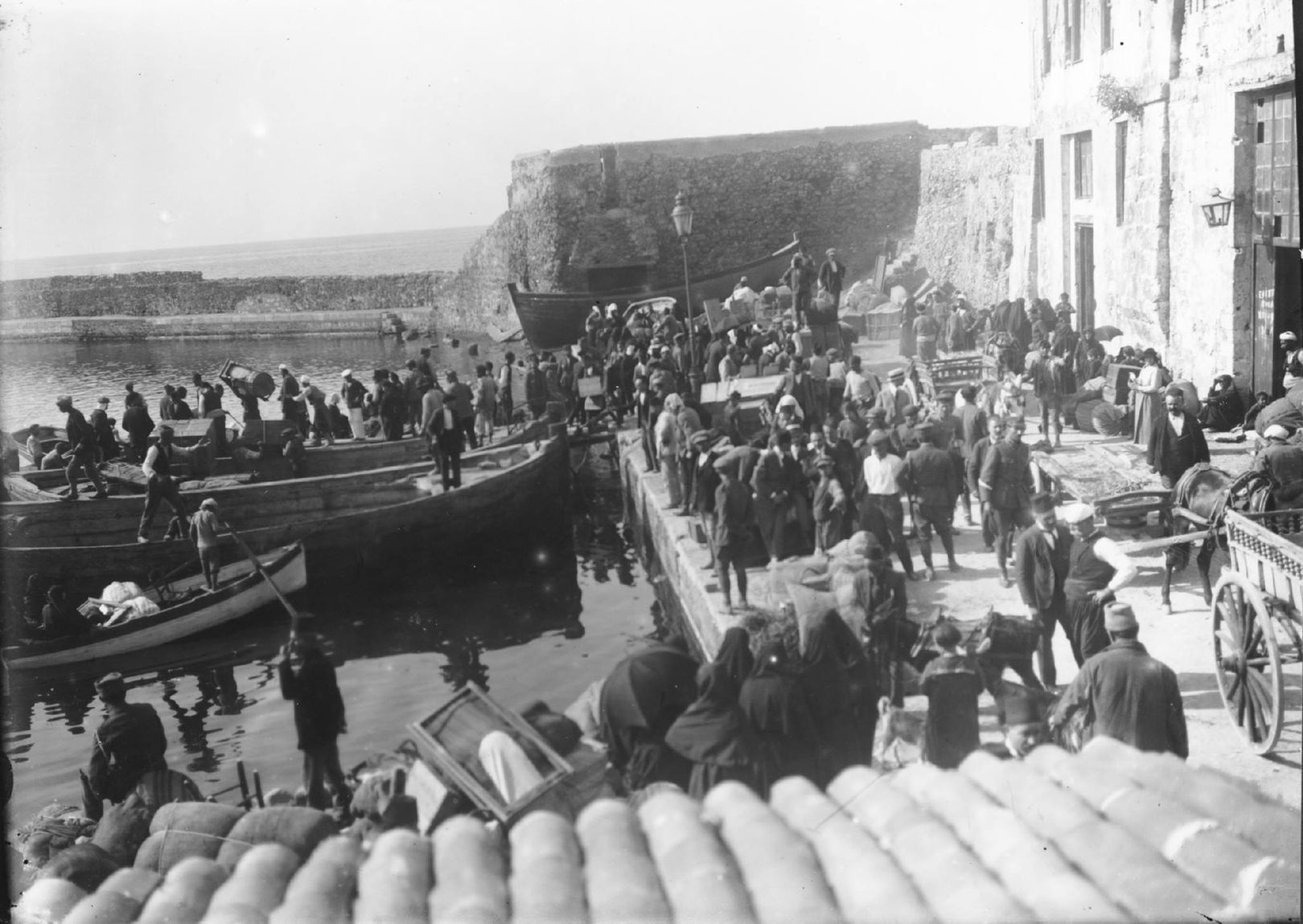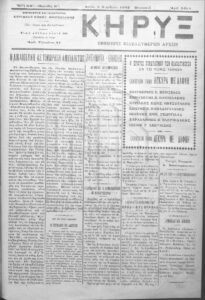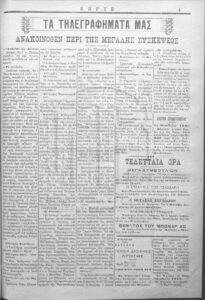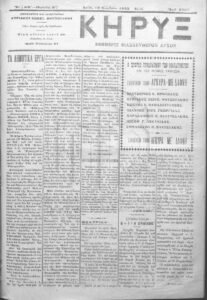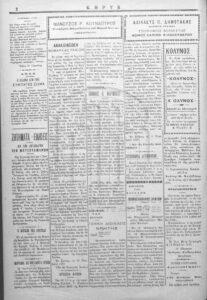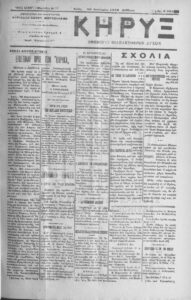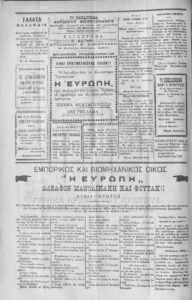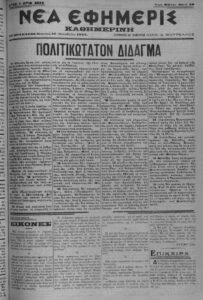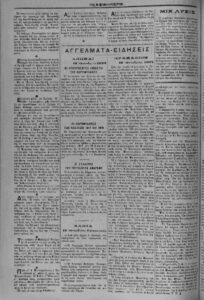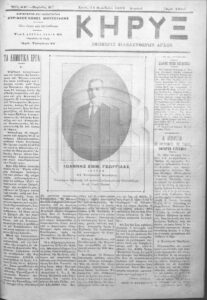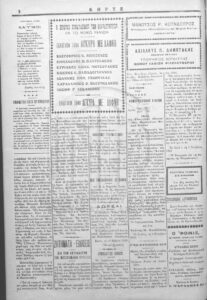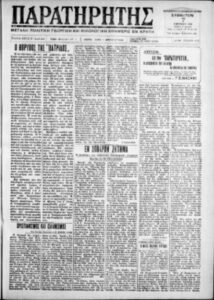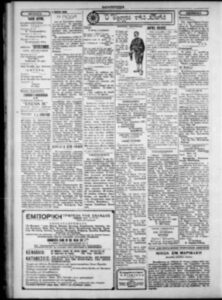Managing the properties of the exchangeables: from theory to practice
City
Migration Period
City Narratives
Category
Full Description
Despite the relevant terms and stipulations included in the Population Exchange Agreement of 1923, managing the refugees’ assets proved daunting not only due to the sheer size of the task, but also due to its delicate nature. Although it had appeared reasonable in theory to record the refugees’ properties and then grant them assets of equivalent value in the countries of resettlement, in practice, the implementation of this plan was turning out to be increasingly difficult.
Hence, in the years following the signing of the Agreement, there was a series of laws and treaties to settle issues that had not been covered in the initial text. However, the original intention remained unchanged: to grant the assets left behind by those leaving for Turkey to the Asia Minor refugees.
Starting at the end of 1923, on the eve of the departure of the first Muslims from Chania, we find announcements by the local authorities addressed to those who were renting Muslim land. The announcement by the General Governor of Crete presented in this entry warned: ‘The renters of Muslim lands are not allowed to plant new crops. After the harvest of the already planted crops, the land that has not already been appropriated and is being used by renters will be transferred to refugees in its entirety’. Essentially, the General Governor was simply promulgating the relevant decision made by the Ministry of Agriculture (Decision no. 102758), published in October 1923.
A few days later, the General Governorate of Crete clarified that Muslim properties would be granted to refugees as soon as their previous owners departed, but those properties that were not needed for refugee rehabilitation would be rented out by the local authorities. It was thus explicitly stated that there was a possibility for Muslim properties to be used for purposes other than refugee rehabilitation.
Not surprisingly, the population exchange ended up taking much longer than estimated and the implementation of the laws was neither linear nor seamless. The published invitation presented in the entry, dated 30/01/1926, indicates that leasing Muslim properties was still allowed two years after the beginning of the exchange and that many local actors were affected by this issue. From their side, the renters apparently felt that they had to defend their interests against other parties, which is probably why they had formed the ‘Association of Muslim Property Renters’ which signed the invitation presented here.
The publication also reveals a practice followed by those who continued to rent Muslim exchangeable properties: They hadn’t paid any rent since the beginning of 1924, almost since the start of the population exchange process.
The renters of Muslim properties were not the only party interested in the rented and non-rented immobile assets of departing Muslims. The state plan to grant the properties, both urban and rural, to Asia Minor refugees antagonised several population groups. On the one hand, there were the Muslim owners themselves, some of whom had requested to be exempt from the exchange. Along with their right to remain in Crete, they were also fighting for their right to retain ownership over their assets. There were also Muslims who were trying to sell their properties before they left for Turkey in order to secure payment in cash, but all such transactions were prohibited by the relevant legislation.
However, during the years of the population exchange, there was a series of royal decrees granting exemptions to certain Muslims and allowing them to sell their properties. One such case is referenced in the GG198Α/20.7.123 ‘On the suspension of purchases and sales of lands belonging to Muslims’. The specific case mentioned in this law concerned a Muslim resident of Heraklion. The law allowed eligible Muslims to manage their own lands, which meant that the lands remained in private ownership and were therefore not made available to refugees.
Naturally, this caused intense backlash from the refugees waiting to be rehabilitated. In the case of Crete, there were documented protests and tensions between Asia Minor refugees and Muslims even before the Population Exchange Agreement was finalised. Y. Glavinas notes that ‘what also enraged refugees and their associations were the stalling tactics used by the Muslims in order to delay their departure, and the fact that, compared with the dramatic conditions of the Christian exodus from Asia Minor, the migration of the Greek Muslims was so orderly and organised that it allowed them to pack “every last cup” [according to a testimony by a woman from Asia Minor]’.
The result of these tensions between those who had just arrived and those who had not left yet was a slew of unauthorised initiatives that aimed to address each group’s needs and safeguard their interests. For example, newspapers started reporting on cases where Muslim houses were appropriated by Asia Minor refugees while their owners were still inside. The Heraklion newspaper Nea Efimeris wrote in October 1922: ‘Refugees who were forcefully demanding that they be accommodated in Muslim houses were evacuated from the school of Meskinia and many dwellings surrounding it. The police protected the Muslims and removed the refugees occupying the houses of Muslims’.
Local Christians all over the country also overwhelmingly stood against refugee rehabilitation. In Greece, the Interwar was characterised not only by the refugee arrival, but also by intense internal migration from rural to urban areas. These internal migrants also laid claim on the Muslim properties that were to be distributed after the population exchange. To them, the refugees were the antagonists they had to compete against for access to housing and property.
Similar demands were also voiced by soldiers returning to the country after ten years of fighting wars. It was expected that the state would grant the veterans houses in recognition of their long participation in warfare and the establishment of reserve officer associations was a means towards this end. The news report presented here announces the establishment of the Kissamos branch of a Reserve Officer Association in Kasteli of Kissamos, Chania, in November 1923. In his speech, the reserve officer K. Konstantoulis mentioned that the establishment of these associations ‘indicated the need to rally all the reservists to remind the Society and the State of their responsibilities towards the poor reservists who sacrificed everything for the good of their country’.
Finally, after 1926, the National Bank of Greece was also against granting former Muslim properties to refugees. According to the government’s decision, the bank ‘would manage all the properties, both urban and rural, abandoned by exchangeable Muslims in Greece’. The National Bank started leasing and selling these properties to refugees and locals, sometimes through auction, sometimes not. From 1928 onwards, the bank even started auctioning off properties where refugees were living. This caused, on the one hand, a wave of homelessness among refugees, and on the other, some serious political backlash. According to N. Andriotis, the backlash was particularly intense in Crete, due to the large number of exchangeable properties.
The bank was accused of implementing policies which were impeding refugee rehabilitation and the social benefits that would stem from it. As the article in the Chania newspaper Paratiritis points out: ‘The settlement process cannot be managed as a capitalist business, because it would inevitably be an unprofitable business. Only the State can manage an operation like this, because due to its very nature […] it is allowed to sustain economic losses’. In the same issue, dated April 8, 1928, the Rural Association of All Asia Minor Refugees rallied its members to protest the surrendering of land to the National Bank.
Bibliography
Ch. A. Kossyvas, Legislation on the Administrative Management of Muslim and Exchangeable Properties, P. Livas and G. Chantzos press, Athens 1928.
Nikos Andriotis, Refugees in Greece 1821-1940. Arrival, care, rehabilitation, Hellenic Parliament Foundation, Athens 2020.
Yannis Glavinas, ‘Living with the other side of the Population Exchange: The co-existence of Christian refugees and Muslim exchangeables in Greece in the period 1924-1924’, Bulletin of the Centre for Asia Minor Studies, no. 19 (2015), pp. 217-240.
Aleka Karadimou-Yerolympos, ‘The city and the country. Transformation and restructuring within the national space’ in Ch. Chatziiosif (ed.), History of Greece in the Twentieth Century, 1922-1940: The Interwar, vol. 2.1, Vivliorama, Athens 2002, pp. 59-105.
Spyros Dimanopoulos, ‘The social stratification of the Muslim population of Rethymno and the claims on exchangeable properties’, 1924-1927’, Mnimon, no. 31 (2012), pp. 151-186.
Nikos Andriotis, ‘Christians (natives and refugees) and Muslims. Population mobility in Crete (late 19th – early 20th century)’, Seminar Proceedings, Venizelism and Refugees in Crete, National Research Foundation ‘Eleftherios K. Venizelos’, Municipality of Heraklion, Heraklion – Chania 2008, pp. 65-76.
